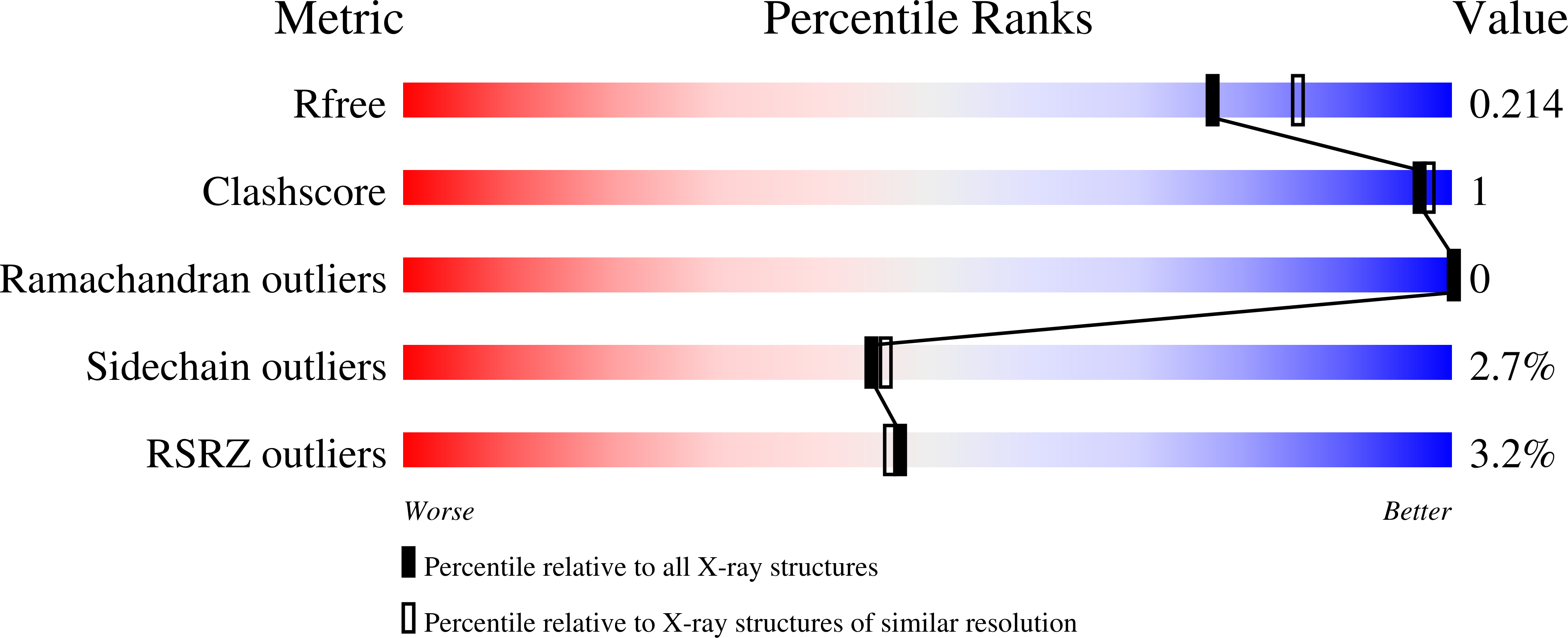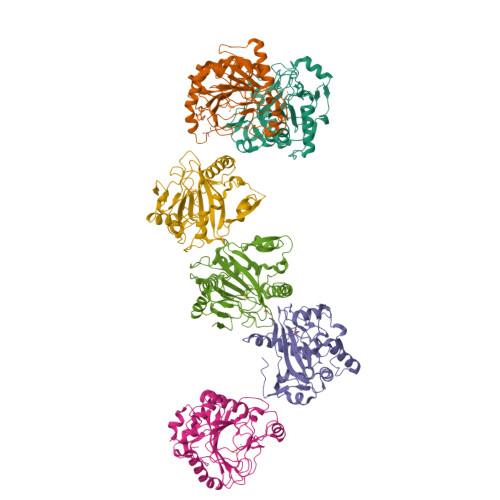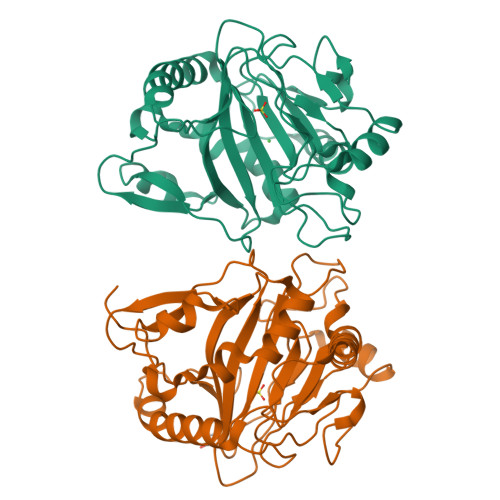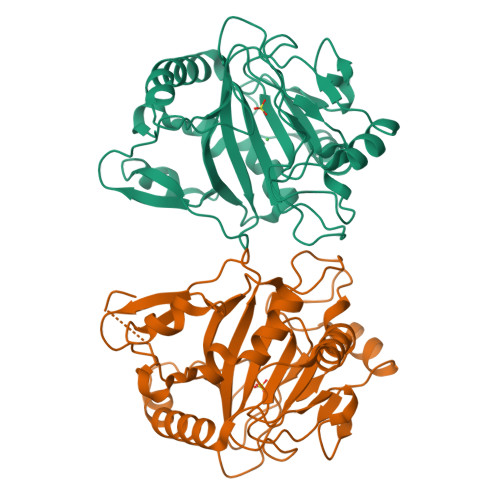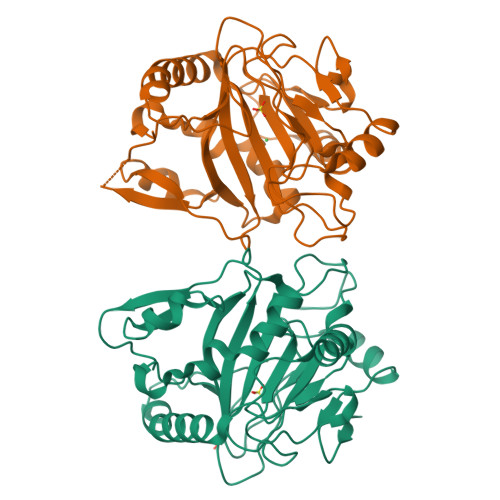Stepwise Post-glycosylation Modification of Sugar Moieties in Kanamycin Biosynthesis.
Kudo, F., Kitayama, Y., Miyanaga, A., Numakura, M., Eguchi, T.(2021) Chembiochem 22: 1668-1675
- PubMed: 33403742
- DOI: https://doi.org/10.1002/cbic.202000839
- Primary Citation of Related Structures:
7CL2, 7CL3, 7CL4, 7CL5, 7CL6 - PubMed Abstract:
Kanamycin A is the major 2-deoxystreptamine (2DOS)-containing aminoglycoside antibiotic produced by Streptomyces kanamyceticus. The 2DOS moiety is linked with 6-amino-6-deoxy-d-glucose (6ADG) at O-4 and 3-amino-3-deoxy-d-glucose at O-6. Because the 6ADG moiety is derived from d-glucosamine (GlcN), deamination at C-2 and introduction of C-6-NH 2 are required in the biosynthesis. A dehydrogenase, KanQ, and an aminotransferase, KanB, are presumed to be responsible for the introduction of C-6-NH 2 , although the substrates have not been identified. Here, we examined the substrate specificity of KanQ to better understand the biosynthetic pathway. It was found that KanQ oxidized kanamycin C more efficiently than the 3''-deamino derivative. Furthermore, the substrate specificity of an oxygenase, KanJ, that is responsible for deamination at C-2 of the GlcN moiety was examined, and the crystal structure of KanJ was determined. It was found that C-6-NH 2 is important for substrate recognition by KanJ. Thus, the modification of the GlcN moiety occurs after pseudo-trisaccharide formation, followed by the introduction of C-6-NH 2 by KanQ/KanB and deamination at C-2 by KanJ.
Organizational Affiliation:
Department of Chemistry, Tokyo Institute of Technology, 2-12-1 O-okayama, Meguro-ku, Tokyo, 152-8551, Japan.







